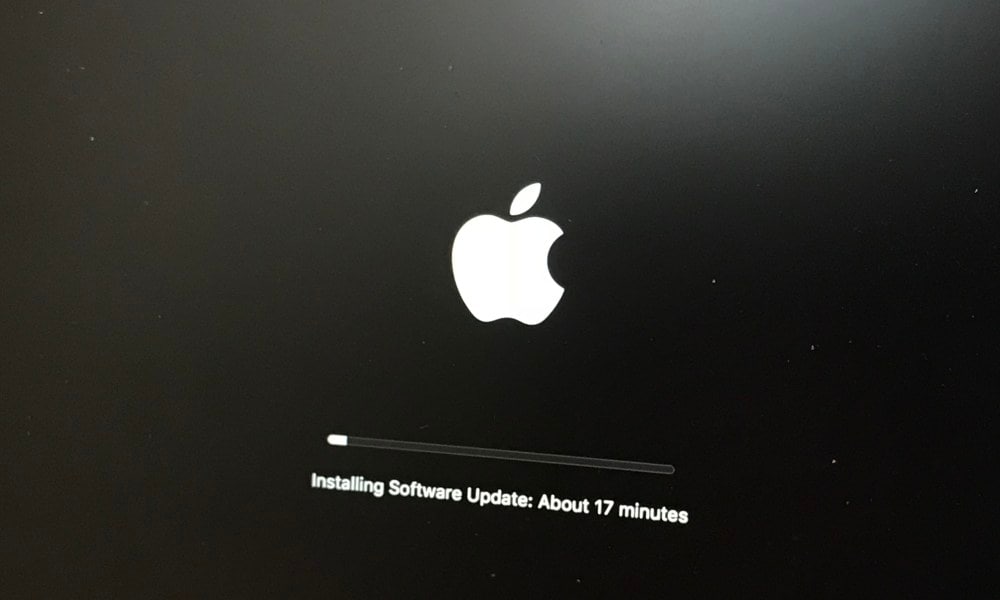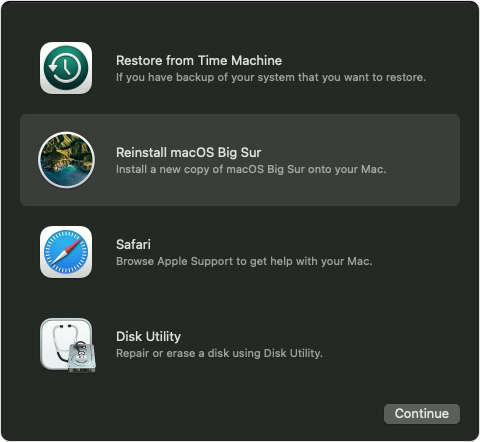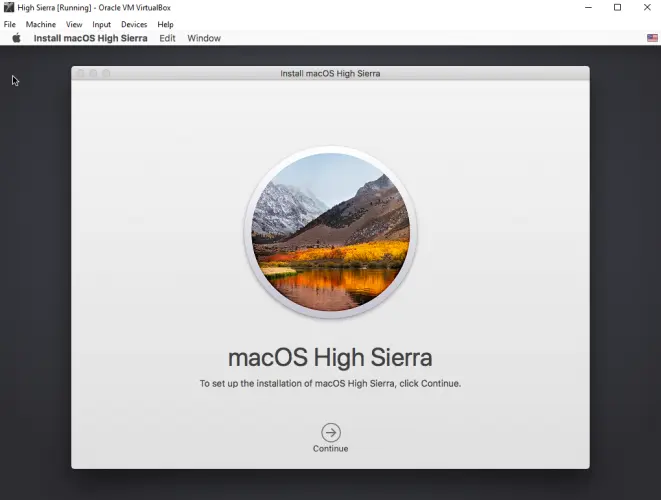
- Reinstall Mac Os Catalina Without Losing Data
- Reinstall Mac Os Catalina Without Losing Data Settings
- Reinstall Catalina Without Losing Data
- Reinstall Mac Os Catalina Without Losing Data Screen
If you have installed Big Sur, Catalina, Mojave or earlier versions, you may have to reinstall macOS for following reasons:
To reinstall macOS, including the latest Big Sur, Catalina, Mojave, without losing data, you can follow the professional guide to update the OS, which will not cause data loss in most of the case. If you still have worries, back up your Mac in advance or recover the lost files with EaseUS Data. The Mac operating system also includes various self-diagnosis and repair tools. Bear in mind, however, that these features might be susceptible to failure. When built-in tools or software-based solutions do not work, the last and most efficient solution is to reinstall the operating system.
- Reinstall When There is New macOS Version Available
- In this video, you will see:How to Reinstall macOS Without Losing any Data.(Applies to macOS sierra, high sierra, Mojave, Catalina & later on).In this tutori.
- Press and hold Command + Option + R.This allows you to reinstall the latest version of macOS that is compatible with your Mac computer from the internet. Press and hold Shift + Command + Option + R. This option allows you to reinstall the macOS that came with your Mac, or the closest version still available. Press and hold Command + R.
Apple keeps working constantly to fix bugs, make performance tweaks, add new features or enhance coding. Therefore, doubtless, there will be new versions of macOS available to upgrade and reinstall.
- Your Mac is Running Slow
Reinstall Mac Os Catalina Without Losing Data
As we all know, for no specific reason, system reinstallation can magically solve a slow Mac in most cases.
- Your System Keeps Crashing or Works Improperly
When you continuously see error messages appear on your mac, or your programs randomly crash/freeze for no reason, like FaceTime won't work, Contacts or Calendar shows a delay or mess, blue teeth or WiFi won't connect…Then, you have a good reason to reinstall macOS.
- You are Going to Sell the Mac
In the case that you want to sell your mac, besides erasing all your personal data and traces on the mac, you will need to reinstall macOS as well.
It is not complicate to reinstall macOS Big Sur or Catalina, but if you want to reinstall macOS without losing data, there are 3 steps you must follow.
Recover Files after macOS Reinstall
- Recover data lost due to macOS reinstallation, upgrade, downgrade
- Recover data lost due to accident deletion, formatting, etc.
- Restore data from both internal and external storage device
- Recover videos, audios, images, documents, and other 200+ files
- 5 recovery modes to find files back easily
- High recovery rate
- Support Big Sur, Catalina, Mojave and earlier
3 Steps to Reinstall macOS Big Sur or Catalina without Losing Data
We all save tons of data on our Mac, so when we decide to reinstall macOS Big Sur/Catalina, the top concern always goes to “will I lost everything if I reinstall macOS”. In fact, reinstallation of macOS doesn’t necessarily cause lost data, it just create a new copy, your existing files and data saved in programs won't be altered or deleted. But just in case of bad luck, we need to do some work on BACKUP, this is crucial for macOS reinstallation without losing data.
Reinstall Mac Os Catalina Without Losing Data Settings
Step 1. Prepare Your Mac for Reinstallation.
- Make enough room for Big Sur or Catalina reinstallation, at least 36GB, so the reinstallation process won't pause or stopped for insufficient space.
- Also, quit all apps or programs under work, so your Mac is fully geared to reinstall.
- Check drive conditions. Open Disk Utility and perform the Frist Aid on your hard drive where to reinstall the macOS to make sure your drive is in good condition for reinstallation.
Step 2. Backup All Your Files for macOS Install (Crucial)
Backup is an indispensable step involved in the macOS reinstallation, here are several options to backup your data.
Option One: Using Time Machine
- Go to Finder>Application, launch Time Machine and choose “Set Up Time Machine”.
- Click “Select Backup Disk” to choose an external hard drive to back up the files.
- Then Check the box before “Back Up Automatically”. Also, you can adjust the backup setting in menu “Options”.
If this is the first time you use Time Machine to backup, wait patiently for Time Machine to complete the backup, it will prompt the notification once finishes.
Option Two: Using Hard Drive
- Connect your hard drive to Mac.
- Open Finder to check if your hard drive is present under “Devices”.
- Create a new folder, copy and paste or directly move the items you want to save from Mac to this folder.
- Finally, eject your hard drive.
Option Three: Using iCloud Service (Backup Desk and Documents Folders)

- Go to Finder>System Preference, click on “iCloud” to bring up its main interface.
- Click the “Options” button for “iCloud”, and check the box before “Desktop and Documents Folders”, then click on “Done”.
Most of our mac users prefer to backup all files but apps. So, to save you from troubles of lost data due to macOS reinstallation, you are recommended to keep records of what apps you have installed, the account and password, also, you can take screenshots of the settings.
Step 3. Reinstall macOS Big Sur or Catalina without Losing Data.
Option #1: Reinstall macOS without Losing Data From Internet Recovery
- Click the Apple icon>Restart.
- Hold down the key combination: Command+R, you will see the Apple logo.
- Then choose “Reinstall macOS Big Sur” from utilities window and click “Continue”.
- Select your hard drive, click “Install” and wait for end of reinstallation.
Option #2 Reinstall macOS without Losing Data From USB
- Download the macOS Big Sur install from Mac App Store onto your Mac;
- Then connect the USB flash drive to your Mac;
- Open Disk Utility program on your Mac, choose the USB flash drive and click Erase to have a clean drive for the reinstallation;
- Open Terminal, copy and paste sudo /Applications/Install macOS Big Sur.app/Contents/Resources/createinstallmedia;
- Then add the volume of usb flash drive: --volume /Volumes/MyVolume, replace MyVolume with your usb flash drive name, mine is Untitled;
- Press Enter, input password and wait for the process to finish;
- Quit Terminal, restart your Mac, hold Command+R when starting Mac until you see the apple logo;
- Login into your Mac with password, go to the menu bar>Utilities>Startup Security Utility, enter password again;
- Choose Medium Security under Secure Boot and allow booting from external media;
- Restart your Mac, in the same time, hold the Option key;
- Choose Install macOS Big Sur, click Next and input password, choose Install macOS, continue to finish mac reinstallation from usb.
Mac Won't Turn on after Update to macOS Big Sur?
Here are 10 solutions to fix 'Mac won't turn on after update to macOS Big Sur, Catalina or other versions'.
READ MORE >What if You Lost Data After macOS Big Sur Reinstallation?
However, losing data after reinstallation still happens. It may result from a interrupted installation (power-off/poor internet connection), corrupt setup, insufficient space or improper actions. Then, what to do if you lost data after reinstallation? Here are 2 methods.
Method 1: Use Cisdem Data Recovery to Recover Data
In the case you didn’t do backup before reinstallation, you will need a dedication data recovery program to find the lost data for you.
Here we recommend Cisdem Data Recovery, a powerful mac program allowing users to recover lost/deleted/corrupted/formatted files from a wide range of external or internal storage devices, no matter the file is lost due to human errors, power-off, reinstallation, upgrade, virus attack or disk crash.
Main Features of Cisdem Data Recovery
- Recover files lost due to OS reinstallation, upgrade, downgrade;
- Recover deleted, formatted and lost files;
- Restore files from internal and external hard drive, USB, SD Card, flash drive, etc.;
- Restore videos, audios, images, documents, archives, 200+ types;
- 5 recovery modes: Basic, External Drive, Formatted Drive, Trash, Advanced;
- Preview files before recovery;
- Fast scanning and recovery;
Steps to Recover Lost Data after MacOS Reinstallation
- Download and install Cisdem Data Recovery on Mac.
Free Download - Choose a Recovery Mode according to your need.
If you want an efficient recovery, choose “Basic Data Recovery”, if you want to recover files with a higher success rate, try “Advanced Data Recovery”. - Select the hard drive where you originally stored the files on mac. Then click “Scan”.
- Check and preview files found by Cisdem Data Recovery.
- Select files to recover.
Check the box before files that you want to recover, then click “Recover” to find back the lost data caused by reinstallation.
Method 2: Use Time Machine to Recover Data with Backup
If you have backed up your files on mac, you can use Time Machine to restore the lost data.
- Step1. Go to Finder>Applications>Time Machine, launch it and choose “Enter Time Machine”.
- Step2. In the popped-up window, use the arrows and timeline to browse the local snapshots and backups.
- Step3. Find the deleted files, then click “Restore” to recover the lost data caused by reinstallation.
Conclusion
The key to reinstall mac OS Big Sur, Catalina or Mojave without losing data is the backup, since no one can guarantee all data will be perfectly maintained after macOS reinstallation. However, if we unfortunately lost files after macOS reinstallation, Time Machine or Cisdem Data Recovery is helpful to recover them back.
So, do you have any other tips to reinstall macOS without losing data? Please share with more of our mac users.
Contents
- 1 Use Time Machine
The new macOS Big Sur has lots of nice features, but just like any other new version, you might have performance issues with the OS. If you are experiencing performance issues with macOS Big Sur, we would advise you to downgrade to macOS Catalina. The problem is, how do you ensure that you do not lose data while downgrading? Well, let us take you through simple steps to downgrade Big Sur to Catalina without losing your data.
Use Time Machine

Using Time Machine is one way to downgrade Big Sur to Catalina. Unfortunately, this is only applicable if you had backed up your Mac with Time Machine before upgrading to macOS Big Sur. Let us take you over the steps to downgrade from Big Sur to Catalina using a Time Machine:
Back up your data
Again, you need to backup your essential files. You can transfer them to cloud storage like Google drive or use external storage.
Format Your Mac’s hard drive
The next step after Backing up your data is erasing everything that is in the drive.
To format your drive:
- Restart your Mac
- When your Mac is rebooting, hold command-R and the utilities menu will papers
- Click ln Disk utilities
- Click Continue and choose Start-up Disk
- Click erase
- Select the APFS file format, then click on GUID Partition Map and confirm
Tip: The formatting process takes time to ensure that your Mac is plugged into power before starting.
Also read:How to Use Cloud Storage for Saving Pictures, Videos, and Documents
Restore Catalina
Reinstall Catalina Without Losing Data
As stated earlier, this method is possible if you had backed up your MacOS Catalina in Time Machine.
This is how you restore MacOS Catalina:
- Restart your Mac and as it restarts, hold Command R.
- On the utilities window, click on Restore from Time Machine and press Continue.
- Choose the backup disk of your Time Machine to install earlier macOS saved on your memory
- Select the backup you want to restore data from and ensure that is the most recent before you installed macOS Big Sur
- Select the disk that you want your backup to be stored
- Click on Restore and then press on Continue.
Your Mac will restart after the process, and you will have downgraded to the macOS Catalina!
Use bootable installer
If you had not backed up, you’re your Mac with Time Machine before upgrading to Mac OS Big sur; you can still downgrade to Mac Catalina. The other option is using the bootable installer to reinstall Catalina. Go to the Apple App Store and download Catalina. Follow this procedure to install Catalina using the bootable Catalina. Before you downgrade your MacOS, it is imperative to ensure that you backup the essential files like documents and personal data. You can back up in cloud storage or an external disk. This way, you can access the files when you need them.
Reinstall Mac Os Catalina Without Losing Data Screen
Wrap up
If MacOS Big Sur is problematic on your Mac, do not be terrified to downgrade it. If you had backed up your Mac with Time Machine before upgrading well, the process would be easier for you. If not, you can use a boot installer to install macOS Catalina. Don’t forget to backup your data to access it after the downgrade.